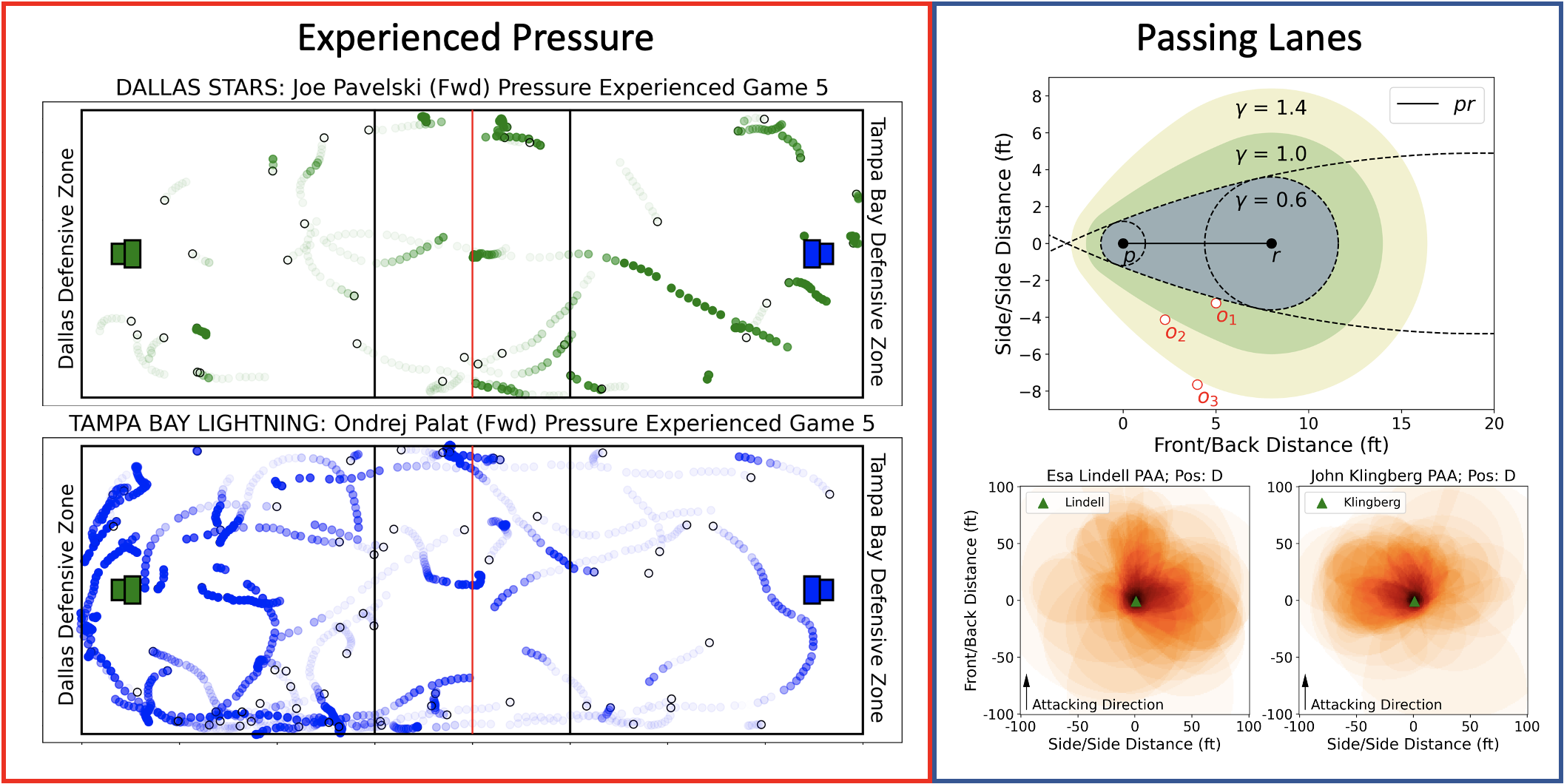Passing and Pressure Metrics in Ice Hockey
David Radke, Daniel Radke, Tim Brecht, and Alex Pawelczyk
To appear at: Artificial Intelligence for Sports Analytics (AISA) at IJCAI 2021
[Click for Paper]

Abstract:
Advancements in player tracking technology and analytics have revolutionized how professional sports are managed, played, and even consumed.
However, these tracking systems have mainly failed to translate to ice rinks, leaving ice hockey to collect relatively coarse and offensively-biased data for player statistics.
As a result, current artificial intelligence (AI) models for player valuation and optimal group formation for ice hockey are limited to comparing with offensively-biased data, reinforcing these biases in models.
The National Hockey League (NHL) used a new tracking system in the 2020 Stanley Cup Playoffs, and we design a suite of novel analytics that add new insights into the performance and behaviour of players, groups of players, and teams.
We calculate metrics for passing lanes and player movement, passing effectiveness, and pressure which have not previously been possible to compute in hockey.
We expect our analytics to support future and more accurate performance and coalition models, and to be of direct interest to the ice hockey and AI communities.
